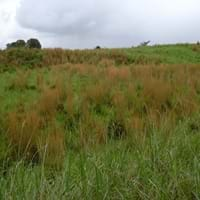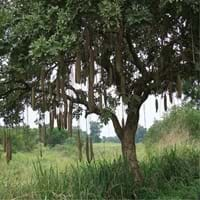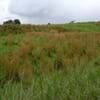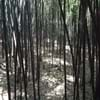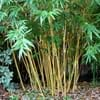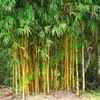Life Span
Perennial
Perennial
Origin
United States, Northeastern United States, Mid-Atlantic United States, Southeastern United States, North-Central United States, Central United States, South-Central United States, Texas
Eastern Africa, Middle Africa
Types
Virginia water horehound
Not Available
Habitat
Along Railroads, Barren waste areas, Hill prairies, Mined land, Pastures, Roadsides, Rocky glades, Sandy areas, Upland, Upland clay prairies, Upland sand prairies, Upland sandy savannas, Upland savannas, Upland soils
Riverine forest, wooded grassland
USDA Hardiness Zone
5-8
9-12
Sunset Zone
Not Available
H1, H2, 12, 13, 19, 20, 21, 22, 23, 24
Habit
Clump-Forming
Arching/Fountain-shaped
Flower Color
Not Available
Dark Red, Tan
Flower Color Modifier
Bicolor
Bicolor
Fruit Color
Not Available
Tan
Leaf Color in Spring
Green
Green, Dark Green
Leaf Color in Summer
Light Green
Green, Dark Green
Leaf Color in Fall
Orange, Tan, Brown
Green, Dark Green
Leaf Color in Winter
Tan, Sandy Brown
Not Available
Leaf Shape
Grass like
Pinnate
Plant Season
Summer, Fall, Winter
Spring, Summer, Fall, Winter
Sunlight
Full Sun, Partial Sun, Partial shade
Full Sun
Type of Soil
Loam, Sand
Loam, Sand
The pH of Soil
Acidic, Neutral, Alkaline
Acidic, Neutral, Alkaline
Soil Drainage
Well drained
Average
Bloom Time
Early Fall, Fall
Indeterminate
Tolerances
Pollution, Drought
Drought, Salt
Where to Plant?
Ground
Ground
How to Plant?
Divison, Root Division, Seedlings
Seedlings
Plant Maintenance
Medium
Medium
Watering Requirements
Average Water Needs, Medium
Needs a lot of water initially
In Summer
Lots of watering
Lots of watering
In Spring
Moderate
Moderate
In Winter
Average Water
Average Water
Soil pH
Acidic, Neutral, Alkaline
Acidic, Neutral, Alkaline
Soil Type
Loam, Sand
Loam, Sand
Soil Drainage Capacity
Well drained
Average
Sun Exposure
Full Sun, Partial Sun, Partial shade
Full Sun
Pruning
Remove damaged leaves, Remove dead branches, Remove dead leaves
Remove damaged leaves, Remove dead branches, Remove dead leaves
Fertilizers
All-Purpose Liquid Fertilizer
Balanced liquid fertilizer monthly
Pests and Diseases
Red blotch
Leaf spot, Mealybugs, Rust
Plant Tolerance
Drought
Drought
Flowers
Insignificant
Showy
Flower Petal Number
Single
Single
Foliage Texture
Fine
Coarse
Foliage Sheen
Matte
Glossy
Attracts
Birds, Butterflies
Bees, Birds, Butterflies, Not Available
Allergy
Pollen
Poisonous when unripe
Aesthetic Uses
Not Used For Aesthetic Purpose
Not Used For Aesthetic Purpose
Beauty Benefits
Not Available
Acne, Slow downs aging
Edible Uses
Insignificant
Yes
Environmental Uses
Air purification, Food for birds, Wildlife
Air purification
Medicinal Uses
Back pain, Diarrhea, Frostbite, Itching, Piles, Sore Eyes, Sore throat
Gynaecological, Malaria, STDs
Part of Plant Used
Root, Seeds, Stem
Dried seeds, Leaves
Other Uses
Cattle Fodder, Used As Food, Used as Ornamental plant
Used to flavour beer, Used to produce a red dye
Used As Indoor Plant
No
No
Used As Outdoor Plant
Yes
Yes
Garden Design
Dried Flower/Everlasting, Wildflower
Feature Plant, Shade Trees, Tropical
Botanical Name
ANDROPOGON virginicus
KIGELIA africana
Common Name
Broomsedge, Broomsedge Bluestem
Sausage Tree
In Hindi
Broomsedge grass
Sausage Tree
In German
broomsedge Gras
Sausage Tree
In French
broomsedge herbe
saucisse Arbre
In Spanish
hierba Broomsedge
Árbol de salchicha
In Greek
Broomsedge γρασίδι
λουκάνικο δέντρο
In Portuguese
Broomsedge grama
Árvore de salsicha
In Polish
Broomsedge trawy
kiełbasa Drzewo
In Latin
Broomsedge herba
farciminis ligno
Phylum
Magnoliophyta
Magnoliophyta
Class
Liliopsida
Magnoliopsida
Family
Poaceae
Bignoniaceae
Genus
Andropogon
Kaempferia
Clade
Angiosperms, Commelinids, Monocots
Angiosperms, Asterids, Eudicots
Tribe
Andropogoneae
Tecomeae
Subfamily
Panicoideae
Not Available
Number of Species
Not Available
Not Available
Season and Care of Broomsedge and Sausage Tree
Season and care of Broomsedge and Sausage Tree is important to know. While considering everything about Broomsedge and Sausage Tree Care, growing season is an essential factor. Broomsedge season is Summer, Fall and Winter and Sausage Tree season is Summer, Fall and Winter. The type of soil for Broomsedge is Loam, Sand and for Sausage Tree is Loam, Sand while the PH of soil for Broomsedge is Acidic, Neutral, Alkaline and for Sausage Tree is Acidic, Neutral, Alkaline.
Broomsedge and Sausage Tree Physical Information
Broomsedge and Sausage Tree physical information is very important for comparison. Broomsedge height is 60.96 cm and width 30.48 cm whereas Sausage Tree height is 1,220.00 cm and width 910.00 cm. The color specification of Broomsedge and Sausage Tree are as follows:
Broomsedge flower color: Not Available
Broomsedge leaf color: Green
Sausage Tree flower color: Dark Red and Tan
- Sausage Tree leaf color: Green and Dark Green
Care of Broomsedge and Sausage Tree
Care of Broomsedge and Sausage Tree include pruning, fertilizers, watering etc. Broomsedge pruning is done Remove damaged leaves, Remove dead branches and Remove dead leaves and Sausage Tree pruning is done Remove damaged leaves, Remove dead branches and Remove dead leaves. In summer Broomsedge needs Lots of watering and in winter, it needs Average Water. Whereas, in summer Sausage Tree needs Lots of watering and in winter, it needs Average Water.
